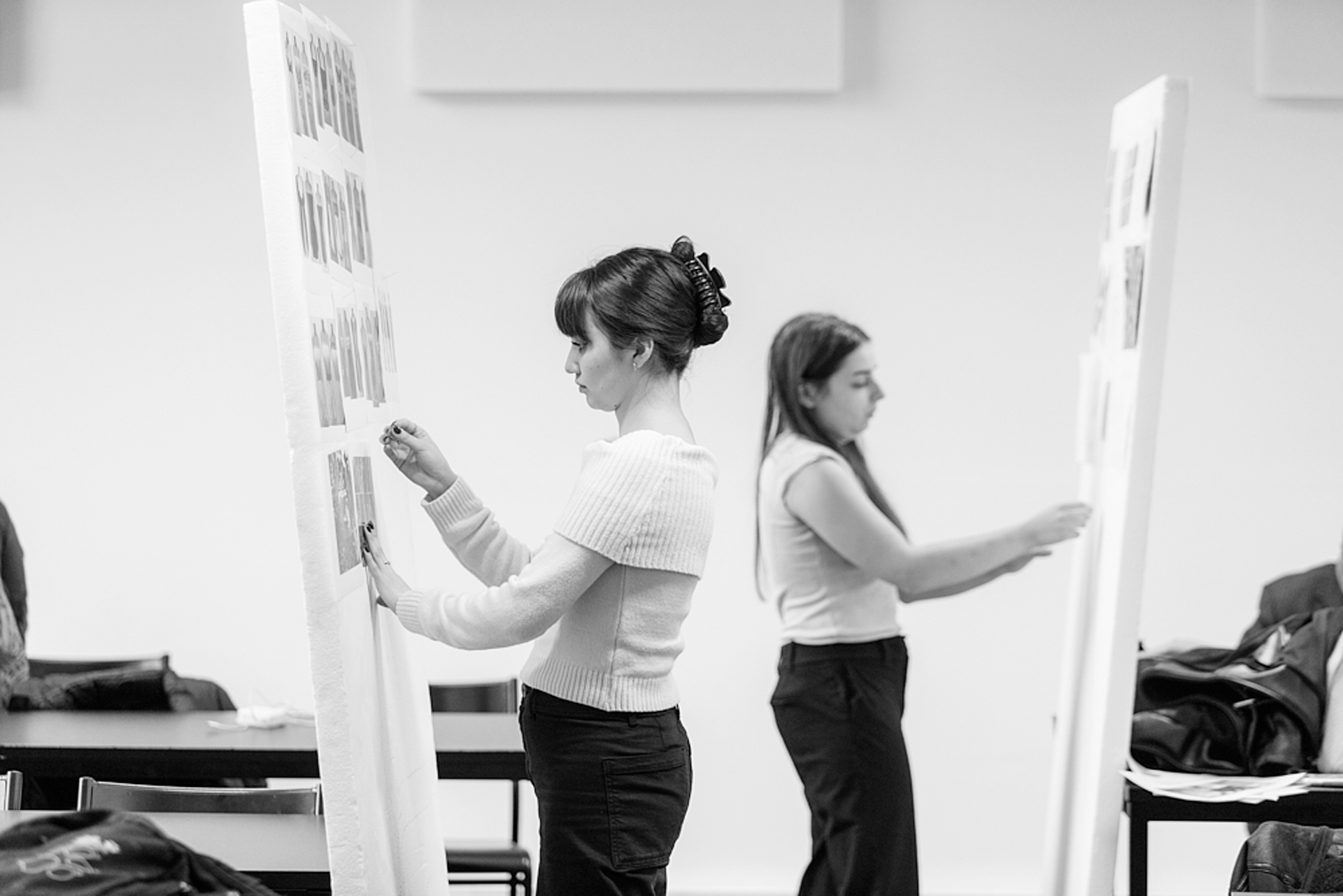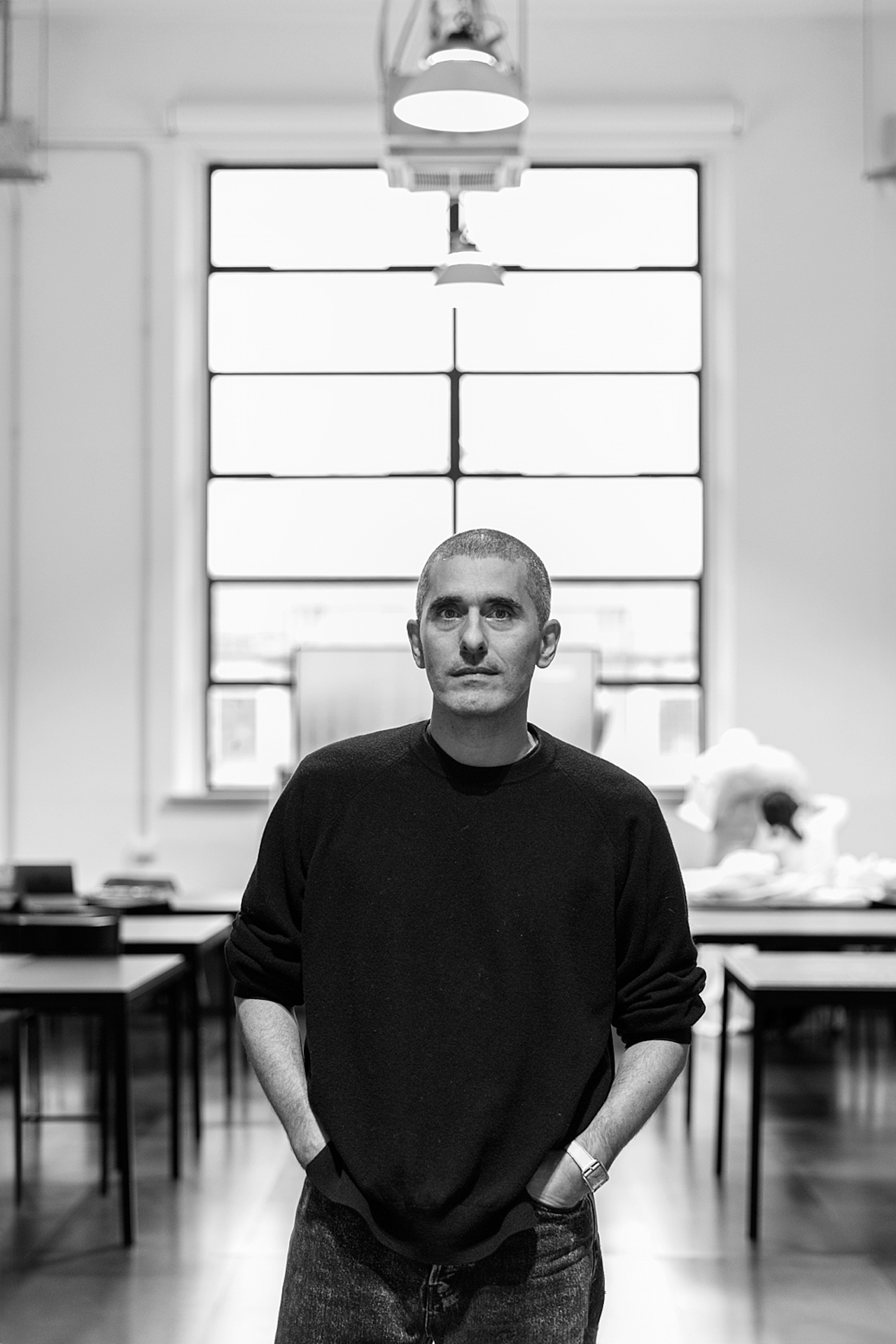Felipe Oliveira Baptista finished his session with a lively brainstorm exchange in his class. The students’ enthusiasm was palpable; every minute before the end of the day was precious to them. They wanted to climb into his world, evident when he opened one of his famed notebooks (made of Portuguese paper from Lisbon no less) and they surged towards him, keenly peering over. He quickly shuts the book, smiling, as if to say, “it doesn’t work that way!”

This sums up his whole approach to teaching Creative Direction in fashion, “You don’t learn how to be a Creative Director, you become one”. The students are desperate for the perfect formula but as Felipe subsequently lets on, building a creative process takes time, experience, and a fierce fascination for everything fashion, art and culture.
The session comes to an end and Felipe kindly lends more of his time to talking about a role that he first covered for his own brand and subsequently for industry giants like Lacoste and Kenzo. “The role of a creative director is to be responsible for the look and feel of a brand, to create the concept of the brand, through its products, communications and distribution.” Felipe stresses the importance of the variable nature of the role, “it varies from brand to brand, some fashion companies want a creative director who mainly works on the clothes and as an ambassador, others want just accessories, some want someone to oversee communications, or the look and feel of the brand… it’s not always the same desk job.”

Actually teaching Creative Direction in fashion can be challenging, “a lot of these things come from experience, from cooperating with creatives, other fields and other departments. As I was telling the students, you have to learn how to communicate in a very simple and powerful way.” He emphasizes the intermediary aspect of the role, a creative director’s ideas have to be translated and understood by anyone in the company, from CEO to communications director to HR to designer and product developer. He smiles, “how you communicate visually, how you tell a story and how clear you are as a storyteller is your biggest strength.”
Felipe agrees that the creative process calls for lots of outside interests and influences, “fashion is about humans at large, art at large, and design and cinema. You can get bits and bobs from all these things and create a story.” He goes on to highlight the importance of a great mood board in creative direction, “for me it is very important because if you think that forty people have to work under you, and under that, it’s like doing a script or as a film director doing a storyboard. A mood board is a storyboard.” Felipe himself is an artist, working with photography. It’s clear that part of his success as a creative director, and something he wants to pass on to the students during this mentorship, is how fundamental a connection to wider culture is; fashion photography, cinema and art are just some of things he cites as being great sources of references. “Drink as much culture as you can, and learn, it’s a cliché that knowledge is power, but creatively it really is, the wider your knowledge is in all the creative fields, the bigger your playground is to create.”

Felipe is unwilling to be negative about the supposed diminishing of hard skills in the fashion industry. When talking about students today he says, “I think they have so much more access to new information, to new techniques, to new technologies, I think we are in the transition phase.” He underlines that with our ever-shortening attention spans and hectic rhythm of modern life it is increasingly difficult to teach hard skills like sewing and drawing. Despite this, he is keen to avoid the dichotomy of the past being better than the present. The faith he holds in the next generation of fashion pioneers is remarkable. During his mentor class earlier in the day, when asked to share his personal creative methods, he joked that he couldn’t do so because the students would soon become his future competitors. Although accepting and encouraging of all types of skills in the industry, “(…) owning hard skills, makes you a better whatever you are, knowing how to make clothes, makes you a better designer, knowing how to draw can help you express an idea.”

Even the most successful professional pathways are punctuated with setbacks, “I’m always saying to students, learn with your mistakes.” Felipe recalls that for all the jobs he did get there were just as many that he didn’t get. He calls attention to the importance of analytical thinking and making sure, if something didn’t go right, that you don’t put yourself in the condition for it to happen again. Students want to go from A to B, he mentions, but it doesn’t work like that, there are many stops along the way and each and every obstacle informs everything else that happens, especially the successes.

Felipe finds the process of passing on knowledge fascinating; it serves as a captivating avenue for him to engage with the new generation and gain insight into their perspectives as well as allowing the students to participate and interact with a course that in Felipe’s time didn’t even exist. The multi-interest thirst for knowledge aspect of the Creative Director role in fashion comes to the fore throughout his mentorship. “It’s not a nine to five job (…) if you want to do creative direction it’s because you are very curious by nature and you like to exercise that curiosity endlessly.”
Photographer: Serena Gallorini

